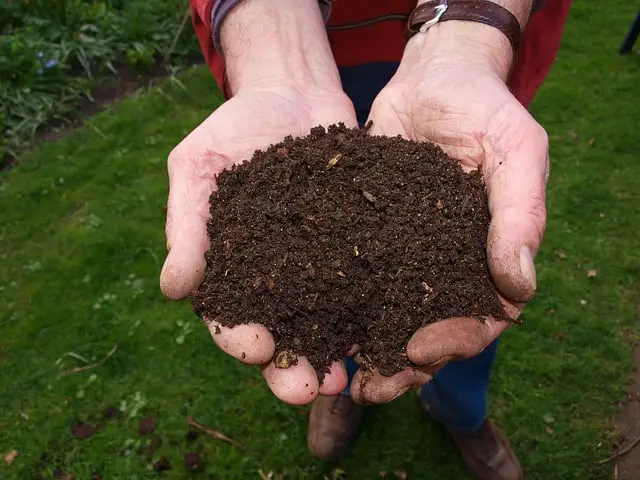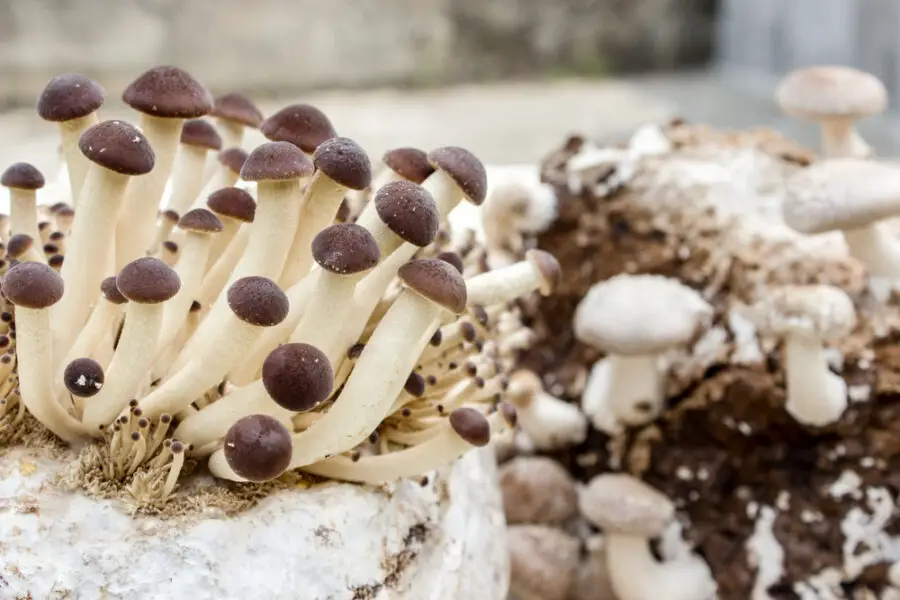While the specifics are different for each mushroom variety, generally the best way to prompt your mycelium to fruit is to imitate the conditions of the mushroom reaching the surface. Slightly increasing the temperature and light, lowering the carbon dioxide level, and reducing the humidity all “trick” the mycelium into thinking it has reached the surface of the substrate and should now produce fruit.
The rest of this article will help you to understand all the factors that influence mushroom fruiting, choose a mushroom type that is likely to fruit often or efficiently, and pick up a few tricks to get a stubborn mycelium to produce.
Should I Care More About Yield or Efficiency?
Are you more concerned with producing the most mushrooms possible in the least amount of time, or growing most mushrooms per pound of dry substrate? That is the difference between yield and efficiency, and there are different strategies for either goal.
Which Mushrooms Have the Best Yield?
Oyster mushrooms are the variety that has the highest yield because they form a mycelium and fruit as quickly as 20 days from inoculation to fruit. The mycelium can produce three rounds of crops before it becomes exhausted and the substrate must be flushed, which means growing Oyster mushrooms will require less time and labor than many others.
Here are some types of Oyster mushrooms that have high yield rates:
| Type of Oyster Mushroom | Time to Fruiting from Inoculation |
| Pearl | 3-4 weeks |
| Yellow (also known as Golden) | 2-3 weeks |
| Pink | 3-4 weeks |
| Blue | 4-5 weeks |
| Phoenix | 3-4 weeks |
| King | 3-4 weeks |
Which Mushrooms Have the Greatest Efficiency Rate?
Biological efficiency is calculated by measuring the pounds of fruit produced per pound of the dry substrate over multiple flushes. A mushroom variety that produces one pound of fruit for one pound of substrate would be calculated at 100% efficiency.
Here are some types of mushrooms and their biological efficiency rates:
| Mushroom Type | Biological Efficiency Rate |
| Shiitake | 100-200% |
| Lion’s Mane | 90-140% |
| Reishi | 80-120% |
| Pink Oyster | 100-170% |
| King Oyster | 100-150% |
How Does the Substrate Influence Fruiting?
Each variety has a preferred substrate, and choosing the ideal one for the variety you’ve chosen to grow will maximize your fruit production as well as how quickly fruiting will occur. Mushrooms that have evolved to grow on rotting wood prefer wood chips, sawdust, damp logs, straw, or even cardboard, and other varieties that grow wild on forest floors might tolerate used coffee grounds, spent grain, or corn cobs.
Does Temperature Matter?
Raising the temperature slightly after the mycelium has colonized the substrate can prompt the growth of primordia, the beginning stage of fruiting. This imitates the increase in ambient temperature that the mushrooms experience after breaking through the surface of the rotting wood or soil, signaling to the mycelium that the conditions are right for fruiting.
Can Raising the Temperature Cause Problems?
Caution is advised with this strategy because the mycelium itself creates heat as it breaks down the substrate for consumption. If the mycelium becomes warmer than the temperature of the room, it can overheat and weaken, or even die, killing your fruit production.
Can Light Prompt Fruiting?
Another method to initiate fruiting is to expose the mycelium to more light, which mimics breaking through the substrate to sunlight. This can be done by cutting holes in the grow bags or setting up UV lights for mushrooms grown on logs or in trays.
If the mycelium is not mature enough or hasn’t yet fully colonized the substrate, this can stunt the growth of the mycelium and cause premature fruiting. Over the long term, this means both lower yield and efficiency. Do not try this unless you are sure your mycelium is ready.
How Humid Should My Fruiting Chamber Be?
Increasing or decreasing the humidity slightly can kick start your mycelium into producing fruit. Humidity above 80% is recommended for most varieties of mushrooms that are fruiting or ready for fruiting.
If the humidity is too high, bacteria and mold can grow and harm your mycelium. If it’s too low, the mushrooms may crack and the mycelium can dry out or die.
Is Air Circulation Important?
Even though we think of fungus as something that flourishes in damp places without much air, mushrooms breathe out carbon dioxide and need oxygen to grow. Make sure that the air around your mushrooms isn’t getting stale because a fresh burst of air may prompt the mycelium to start fruiting.
Should I Worry About Contamination?
If your mycelium is not fruiting and you’ve tried several different strategies to force it to fruit without any luck, it may be time to check the health of your mycelium and how clean your substrate is. A too-wet substrate is an environment that breeds bacteria and mold, and can “drown” a mycelium by depriving it of oxygen.
What Should I do If I Have a Contamination Problem?
If you discover a contaminated mycelium or substrate, remove it immediately so that it doesn’t infect the other plants and prevent them from fruiting. A single contaminated mycelium or substrate can ruin an entire mushroom crop!
Did Contamination Happen Because I Skipped Initial Sterilization?
While it is possible to have a thriving hobby mushroom farm without worrying about expensive startup processes like sterilization equipment and ideal substrates, failure to sterilize properly before inoculation is the leading cause of contamination. To ensure a good fruiting crop throughout the life of your mycelium, it’s worth the investment of time, effort, and funds to disinfect everything.
For contamination-free mushroom farm:
- Treat gloves, containers, surfaces, and anything that will touch spores or substrate with alcohol
- Sterilize the substrate
- Flame sterilize the syringe needle when using liquid cultures
How Long Do I Have to Wait to Try To Prompt Fruiting?
Rushing any stage of mushroom growing can result in poor or no fruiting. Give your mycelium the time it needs to fully colonize the substrate, with the right amount of air circulation, moisture, humidity, light, and correct temperature, and it will reward your patience with pounds of delicious mushrooms!


